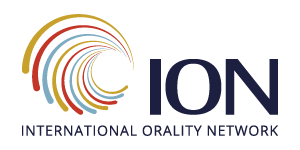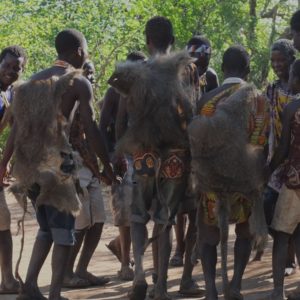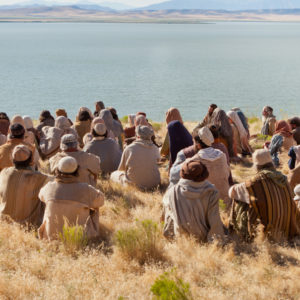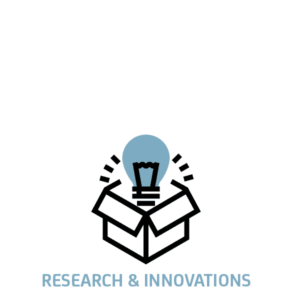The following is a chapter from the book ‘Oralities and Literacies: Implications for Communication and Education‘. A chapter will be posted here each week.
Chapter 7 – Oral Methodology, Adult Learning, and Women’s Health Education
by Sarah Wood, Ph.D.
Once upon a time a young health teacher went to Africa to use her public health degree in a rural mission project. She loved the idea of teaching health to physically and spiritually needy women in villages. She was surprised to discover that her educational background was not enough to be effective in her work as a health teacher. For nearly 25 years she persevered in her efforts to find ways to help non-literate village women learn and apply health concepts.
For me, the health teacher in this story, the discovery of basic principles of adult education was enormous. The complexity of working out these principles in practical ways in cross-cultural work with non-literate women became the greater challenge. Increasingly I have adopted adult-focused oral methodology into my health teaching as I discover the role these tools play in the village women’s learning process.
Foundational Educational Theories
Stories, role plays, songs, games, and demonstrations are the most common examples of teaching tools that would be considered oral methods. But how do they interact effectively with adult education models ?
Adult Education Theories
Malcom Knowles (1970) is credited with promoting the term andragogy to distinguish the educational approach for adults from traditional pedagogy. Knowles’ set of assumptions provides a framework in developing teaching strategies for adult learners. His observations about the ways adults learn include (a) adults have a need-to-know for learning, (b) adults are responsible for their own learning decisions, (c) adults have abundant personal experience to build on for learning, (d) adults possess a readiness-to-learn based on a need, problem, or situation which creates a teachable moment, and (e) adults are most responsive to internal motivations to learn.
In addition to educational theorists, researchers in fields of sociology and psychology have contributed the following models to understand the adult’s orientation to learning.
- Behaviorist: focuses on learning that results in changes of behavior. The teacher’s role is to provide the information that motivates those changes to happen.
- Cognitivist: focuses on knowledge and understanding. The teacher provides the learner with goals that develop mental capacities of intelligence and memory.
- Humanist: the adult develops mentally, emotionally, socially, and in any way to reach their potential. The teacher facilitates this holistic process of self-directed learning.
- Social learning: occurs in interacting with the social context or environment. The teacher’s role is to model appropriate social behavior and guide learning.
- Constructivist: looks at the ways learning develops from experience. The teacher facilitates the construction of meaning and new knowledge as a result of an experience.
Culture also plays a role in adult learning. Contextual learning can be influenced by the cultural environment. These influences go from larger social issues of gender and power status to practical issues like setting up the room so learners feel at ease. In analyzing power, Brazilian educational philosopher Paulo Freire (1993) proposed higher aspirations in learning that move towards social and political activism. Education is a means of personal and community empowerment, building self-confidence and awareness to effect change.
Experiential learning (ET) and transformational learning (TL) are adult learning models also influenced by Freire (1993). In ET the learner gains new knowledge through reflection on an experience leading to action, thus forming a new experience. Meaning making from experience follows the constructivist orientation of learning. Similarly in TL a disorienting dilemma leads to reflection, critical thinking, and transformative change. Meaning-making happens at the cognitive level, influencing self-perception, beliefs, and behaviors.
Health Education Theories
Public health is a medical practice that focuses on disease prevention and health promotion. Goals place priority on education and awareness programs that: keep people healthy, protect from sickness, and help in the management of chronic diseases. Theories based on the behaviorist orientation of teaching are foundational in public health education theories.
- Theory of Reasoned Action (TRA): evaluates behavior based on internal understanding of health information apart from environmental/social influences.
- Social learning theory (SLT): emphasizes the observation and modeling of behaviors that encourage positive change.
- Health Belief Model (HBM): the most common model that looks at factors contributing to perceptions of health. Influencing behavior choices are: (a) the seriousness of the disease, (b) a sense of personal threat or risk, (c) perceived benefits in changing behavior, barriers or variables that are involved in making changes, (d) external cues or motivations that lead to action, and (e) the individual’s sense of ability to change their behavior.
Integration of Cross-Cultural Adult and Health Education Theories
This taxonomy of theories leads to examining how to integrate cross cultural adult and health education for non-literate learners. The principle of need-to-know cannot be taken for granted in a voluntary, non-formal health class made up of non-literate village women. The women need to see the relevance of the health lessons to their lives in order to be motivated to attend, learn, and change behavior. They also need to sense this knowledge will empower them in taking responsibility for decisions related to health issues that affect their families and communities. A diagnosis of diabetes or a child with diarrhea would potentially create worry, leading to a readiness-to-learn .
A point of contrast for the different models is the role of the teacher. Adult education models encourage learner-centered lessons. The teacher is a mentor, model, coach, or facilitator. In health education the teacher is the expert source of information, controlling the learning environment and encouraging desired changes in behavior. This makes a health lesson more teacher-centered. The teacher needs to find the balance in facilitating discussion of the experiences and knowledge of the learners with the new information that needs to be introduced.
Perspectives on Oral Methods
Stories are a part of every culture that both entertain and teach lessons about life. Various academic disciplines have contributed to understanding the value of oral methods.
Social Sciences
Walter J. Ong (1982) wrote Orality and Literacy, the original work in the field of orality. Ong’s background in literature, history, and philosophy led to his study of how the expression of thought shifts as language becomes modernized through print. Ethnographic studies in anthropology generally include oral traditions or folklore. These art forms provide a sense of identity and cultural heritage. Storytellers may be the most honored members in a society. This is also true of musicians, poets, actors, or any artistic performer. These use their gifts to communicate messages that contain moral values. Medical anthropology looks at specific cultural factors related to all aspects of health beliefs and how these affect behavior. Studies at the level of beliefs and knowledge can reveal cultural patterns that incorporate oral traditions and methods.
Religious Studies
Many of the older religious faiths have traditional stories that have been passed down orally until being preserved in print form. Significant attention has been given to the academic research of orality in Christian ministry and theological studies. This includes the recognition of cultures that demonstrate a preference for oral over written forms of literature, where individuals are educated but do not necessarily own and read books.
Jesus taught with parables, setting an example of using oral methodology to communicate deeper spiritual truths. Bailey (2008, 280) proposes that Jesus taught theology metaphorically, challenging the learner with difficult or abstract spiritual concepts. Christian theologians and cross-cultural workers find that Jesus’ model of teaching is applicable today in cultures that demonstrate an oral preference of learning. Christian training programs and higher education are more and more considering ways of incorporating oral methodology into cross-cultural contexts.
International Development
This field, which incorporates health and education, offers significant and practical contributions in cross-cultural work. The books Where There is No Doctor (2013) and Helping Health Workers Learn (2012) are invaluable resources for community development workers. The authors reiterate that “how something is taught is just as important as what is taught” (Werner & Bower 2012, p. 1-4 ). Stories and oral methods encourage the participatory process of learning. These allow problem-solving, encourage critical thinking, and build self-confidence moving the learner from what is known and familiar to what is new and applicable.
The four-volume series Training for Transformation: A Handbook for Community Workers (Author YEAR) draws heavily from Freire’s influence. In this series the teacher is called an animator, helping learners to reflect and move toward action. These learner-centered concepts have been incorporated into a Christian training strategy, Community Health Evangelism (CHE), promoting holistic transformation. The training provides a variety of participatory lessons, each beginning with a problem posing “starter” in the form of a role play or story. These encourage the learning process, reinforcing self-discovery and motivating the learners towards action.
Oral Methodology in the Teaching and Learning Process
“A father and a son were planting corn. The son asked his father why the corn wasn’t planted closer together in order to obtain more per hectare. The father explained that if there is space between the plants, they grow stronger and healthier and produce more grain” (Werner & Bower 2012, p. 13–6).
The Learning Process
This story is not a lesson on agriculture but is an analogy to family planning, a simple way to dialogue on what is known to work in planting corn and applying that to spacing children . Meaningful change in behavior happens when the learner is touched at the level of beliefs and values. Stories can introduce characters that face problems with courage and skill, attitudes that inspire and empower the learner towards action. The learner can identify good and bad behaviors of characters and discuss factors influencing their actions. Stories and oral methods have the potential to transform behavior from understanding and knowledge rather than fear or shame.
Using role plays representing real needs helps the learner to identify with the health topic and take responsibility in the problem solving process. This participatory approach in a non-formal teaching situation prevents lessons from becoming boring lectures. When a role play is similar to an event in the learner’s life there is opportunity for lively interaction. The sharing of experiences and discussion of certain sensitive issues (like sexually transmitted diseases) can be empowering, helping a learner work through feelings and fears.
Oral methods contribute to a positive learning environment because the teaching style is familiar. Stories, role plays, and songs produce emotional reactions like laughter or tears. Oral methods can play a key role in transformational learning, challenging the learner’s thinking and contributing to the meaning-making process. Finding ways to understand the meaning of illness, suffering, inequalities of health services, etc. can be significant for non-literate village women. Oral methods help to incorporate all worldview influences into a more holistic learning process.
The Teaching Process
A participatory style helps the teacher to discover what knowledge and beliefs the learners have as well as what new information would be beneficial. Oral methods reveal attitudes and beliefs related to nutrition, hygiene, and the causes of disease. The teacher facilitates the process of bringing the learner from the known to the unknown. A health teacher is the expert but the lesson can still be learner centered by building on what is shared in discussion.
Bailey (2008, 279) noted that Jesus’ “primary method of creating meaning was through metaphor, simile, parable, and dramatic action rather than through logic and reasoning .” Western reason and health professional logic make my understanding of health very linear. Village women in North Africa have a circular, holistic understanding of health. My method of teaching health needs to fit into their cultural reality and knowledge. Scientific health facts may be too abstract and cause-and-effect reasoning insufficient to change beliefs, attitudes, and behaviors.
Conclusions
More study is needed to understand how oral methodology plays a role in the meaning making learning process for non-literate learners. Evidence exists that the use of oral methods has cultural and learning value. Empirical studies that address attitudes, beliefs, and perceptions that influence behavior choices are limited. For cross cultural health educators working with non-literate learners the process of teaching health information is as important as the content.








